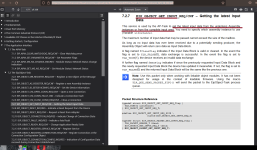Total_newbie
Member
OP
I am looking at both possibilities - Hilscher board, and open source (do-it-yourself) Ethernet/IP communication.
Stated RPI for this sensor (in configuration which we would be using) is 1 ms. I see no specs regarding latency - but shouldn't I assume that sensor would not have RPI faster than inherent latency?
The open source option still seems like a good option. Ethernet/IP packets have clearly defined formats (and RTX real-time already has Ethernet sockets). I am just looking now how to attach controller/sensor tags - but I can't understand why it should be that difficult. Let's see how quickly I have to eat my words...
Stated RPI for this sensor (in configuration which we would be using) is 1 ms. I see no specs regarding latency - but shouldn't I assume that sensor would not have RPI faster than inherent latency?
The open source option still seems like a good option. Ethernet/IP packets have clearly defined formats (and RTX real-time already has Ethernet sockets). I am just looking now how to attach controller/sensor tags - but I can't understand why it should be that difficult. Let's see how quickly I have to eat my words...





